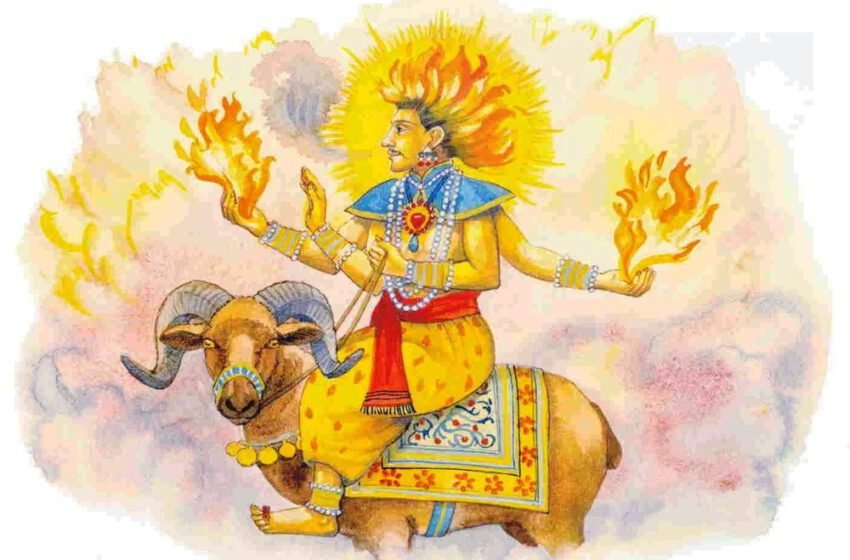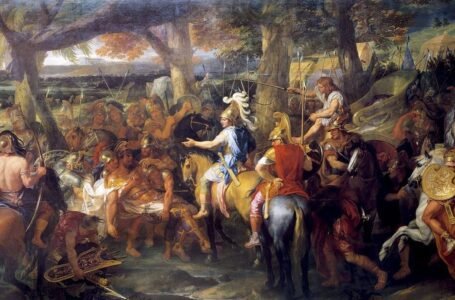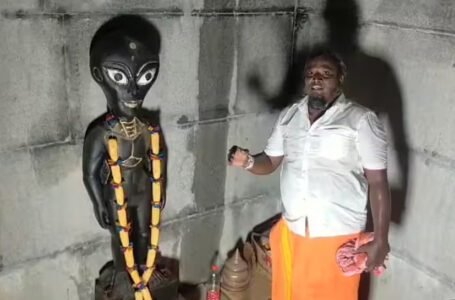Agni Purana: An Ancient Guide to Dharma, Cosmology, and Worship

The Agni Purana continues to be one of the important texts among the eighteen Mahapuranas of Hindu literature. It is the text attributed to and named after Agni, the Hindu God of Fire. On reading one finds the text to be dealing with topics concerning ancient Indian culture, tradition and subjects of cosmology, philosophy, and astrology. The text’s diversity in subjects makes it not only a sacred text for religious followers but also holds importance for scholars of Hindu philosophy, literature, and culture. Often categorized as a Purana associated with Shaivism, Vaishnavism, and Shaktism, this text is also thought to cover all of these traditions objectively with God Vishnu being mentioned very often.

History
Moriz Winternitz and Ludo Rocher remarked in their academic observation of this text by saying that it has chapters that deal with anything and everything. The precise origins of the Agni Purana are difficult to pinpoint, as is the case with many ancient Hindu texts. Scholars suggest that the Agni Purana likely evolved over a period of several centuries. The core text may have been composed sometime between the 7th and 11th centuries CE, with portions added or modified over time.
The Agni Purana is unique because it is narrated by Agni, the fire god to sage Vashishtha who then eventually narrated it Vyasa. The text is said to hold approximately 15,000 verses and is composed in the form of a dialogue. The Agni Purana itself has undergone numerous recensions and variations, with different manuscripts exhibiting differences in content.

Mythology
This purana begins with the narrations of the Dashavatara by Agni. As the dialogue moves forward the stories delve into mentions of the Ramayana when talking of Rama and the stories of Mahabharata when talking of Krishna. The whole purana is filled with rich stories of the Hindu mythology, some more popular than the others.
The Dashavatara
The Dashavatara refers to the ten major incarnations of Vishnu that he took to restore the cosmic order of this world. These avatars include Matsya or the fish, then comes Kurma who was the turtle, Varaha was the third avatar as a boar, Narasimha followed who was half man half lion who came took form to protect his beloved devotee Prahalad, Vamana avatar was Vishnu’s fifth incarnation followed by Parashurama. Then came Rama who was the prince of Ayodhya and Krishna who was Devaki and Vasudev’s ninth child and took birth to remove evil from the world. Buddha and Kalki are considered the last two with Kalki avatar remaining to have taken an incarnation yet.

Mahabharata
The Agni Purana talks of Mahabharata and the roles of various Kauravas and Pandavas in details spread over a few chapters. In one chapter it goes onto explain the whole war in extreme details with mentions of all the people that took positions of commanders throughout the war. There are descriptions of deaths of people that lost their lives during the war and who caused them to die. A chapter also goes onto talk of Krishna and the role he played as a guide to arjuna throughout the war.
It also recounts that Following the Kurukshetra War, the Yadavas received a curse that would cause their clan to come to an end and when Krishna had witnessed this, he understood that his earthly mission was complete. Krishna withdrew to the forest to meditate and eventually left his mortal body. After Krishna’s departure, Dwaraka his city had also submerged into the ocean all according to what had been previously prophesied.

Ramayana
Agni also recounted to Vashishtha, that Rama was exiled to a forest for fourteen years by his stepmother Kaikeyi, who wished her son Bharata to become king. Rama, accompanied by his wife Sita and brother Lakshmana, accepted the exile. During this exile though, king Ravana of Lanka had kidnapped Sita and took her to Lanka with him. Looking for his wife Rama formed an alliance with the Vanara king Sugriva and his commander Hanuman, who played a pivotal role in locating Sita. A massive battle took between Rama’s army and Ravana’s forces. Rama slays Ravana and rescued Sita.
Upon their return to Ayodhya, Rama was eventually crowned as the king of Ayodhya, marking the beginning of Rama Rajya. Even after having given the Agni pariksha sitas chastity kept being questioned. this doubt over Sita’s purity forced her into exile, where she gave birth to their twin sons, Lava and Kusha. Rama does in the end reunite with his sons but Sita refuses to become his queen and leaves with mother earth instead.

Worship
The Agni Purana provides detailed instructions on how to worship Vishnu, Shiva, and other deities. The text stresses the importance of performing specific rituals, known as puja, with sincerity and devotion. The process involves invoking a series of deities including Vishnu, Shiva, and their divine companions through specific mantras and offerings. These rituals aim to bring good fortune and achieve spiritual goals like dharma (righteousness), artha (wealth), kama (desires), and moksha (liberation).
It also consists of detailed prayers for worshipping elements such as the sun, moon, and other celestial beings. There is description of how the devotee must position their fingers while praying which says that folded hands and interlocked fingers must be place close to one’s heart while praying. It also says that an intelligent man has to do forty-eight purificatory rites among the initiatory rites for attaining liberation. One also finds mentions of pancamrta and usage of fragrances and flowers while worshiping gods. It goes into detail about worship of gods like shiva and Ganesha too and it also highlights the modes of performing ancestral rites.

Science in the Agni Purana
One of the unique aspects of the Agni Purana is its inclusion of practical knowledge in fields such as astrology, medicine, and martial arts.
Astrology
The Agni Purana contains extensive sections on astrology which is concerned with the influence of celestial bodies on human affairs. The text describes how to interpret planetary movements and positions to predict auspicious times for various activities, from marriage to the performance of religious rituals. It says that one should commence the propitiatory rite for the planets if one desires for prosperity. It also outlines the characteristics of the planets and their effects on individuals’ lives, offering insights into how one might mitigate negative influences through worship and rituals.
Medicine
The text describes various medicinal herbs and treatments for common ailments, emphasizing the importance of balance between the body and mind for overall health. It also talks of various types of charms that would include medicinal herbs that can cure people of several types of ailments or can provide relief from them.

Legacy
The Agni Purana has left a lasting impact on Hindu worship, particularly in its contributions to the development of religious rituals. One will find mentions of codes of conduct of a householder, of a student etc. it also goes onto talk of the rules of marriage and codes of moral conducts. This purana in that sense transcends the idea of just mentions of external conducts and delves into internalised behaviour as well.
The text’s inclusion of practical knowledge, such as astrology and medicine and by connecting science with religion, the Agni Purana shows that spiritual and material well-being are interconnected, and that knowledge of both is necessary for a balanced and fulfilling life.
Over the years, the Agni Purana has been referenced by religious scholars, theologians, and practitioners, making it a significant text in the study of Hinduism.

Conclusion
There is a lot that one that this text gives away, be it in terms of practical knowledge or the prescribed ways of worshipping in Hindu religion. That is the reason it is not only the people that look at it as a religious guide that find interest in it but it also holds importance to academics. It retells legendary and epics tales like Mahabharata and Ramayana but it also brings to light a rich side of Hindu culture by mentioning science related topics of astrology and medicine as well. The Agni Purana hence continues to influence the way people approach worship and daily life practices, emphasizing the importance of devotion and knowledge.


